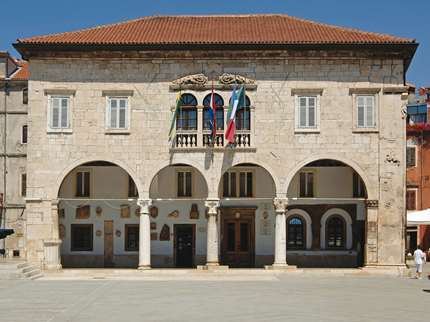Return
The Communal Palace (Town Hall) in Pula
The Communal Palace has not changed its function throughout its long history. It was built on the remains of a Roman temple, which can still be seen today.
The Communal Palace in Pula is one of few preserved older town structures, characterized by its exceptional architecture. Its core dates from 1295, from the time when Pula was a free municipality with the seat of the town self-government. During its long history, the role of the Communal Palace did not change. It remained the seat of dukes and proveditors during the Venetian administration. Later it became the seat of the mayor, the role it has preserved until the present day. The palace itself was erected on the remains of another Roman temple, still visible and built in its back. Although the building rests on the Antiquity remains, additions were made in the course of several centuries. The biggest changes occurred from the 10th until the 16th cc. The inscription bearing the year 1295 built in the northern facade renovated in the 16th century most probably marks the first thorough reconstruction and addition. Its eastern walls show intertwined Romanesque and Gothic features, the oldest phases of the construction development. Sculptures of Telamon and Siren in the corners closed by Renaissance columns are also visible. Windows, the youngest architectural palace elements, are Baroque. Continuous partitions and structural additions resulted in the building which represents an exceptional medley of architectural styles ranging from the Romanesque to the Baroque. Although having been abandoned for centuries, it stands today fully restored.










